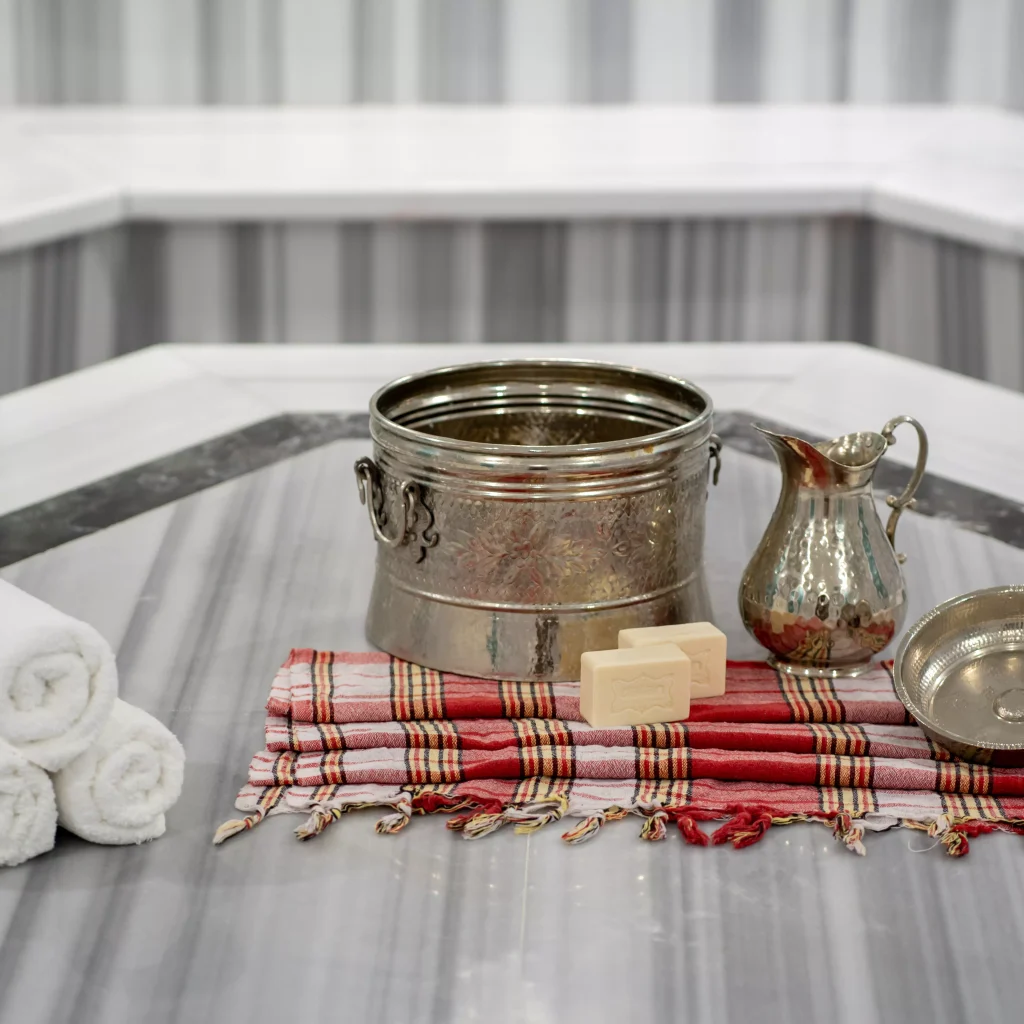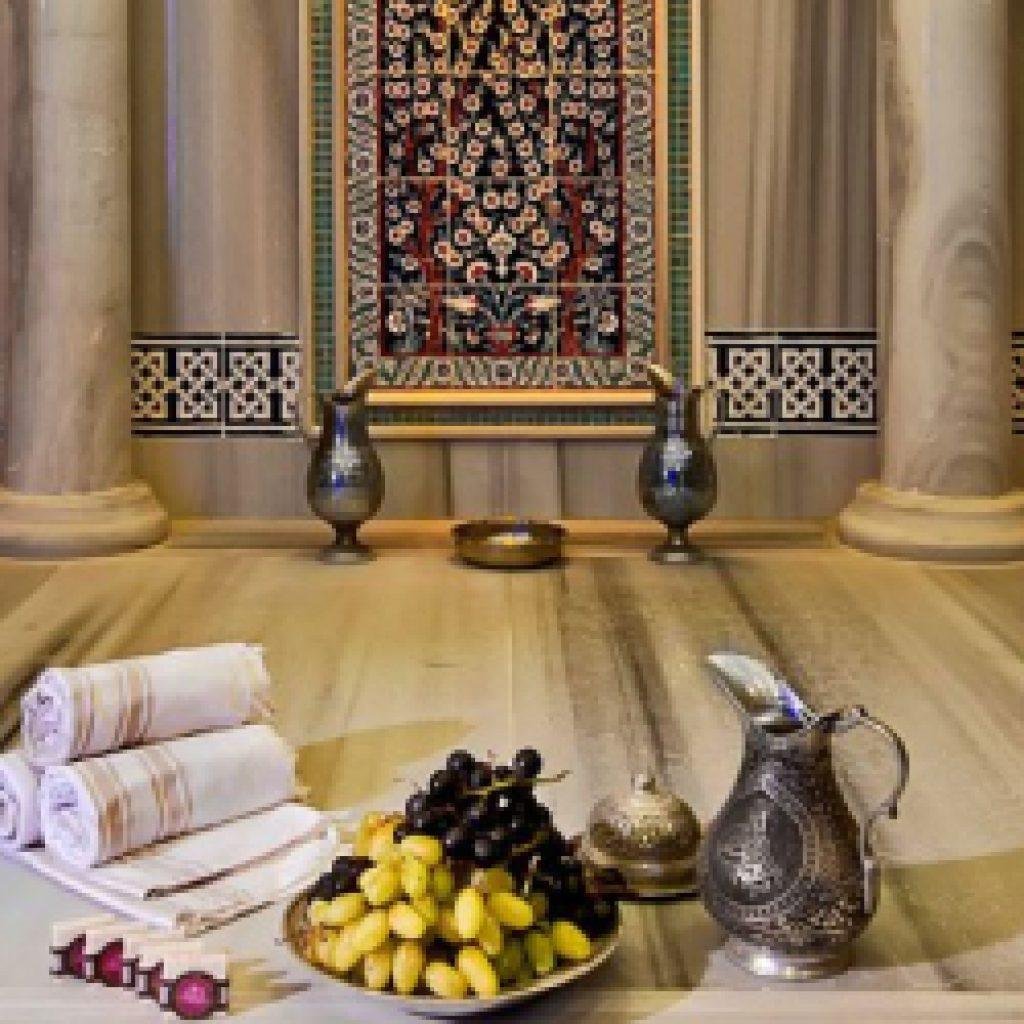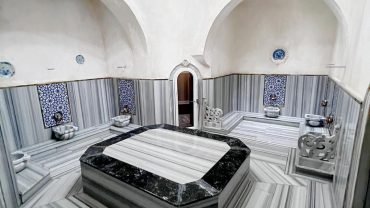The Ultimate Guide to Hammam Essentials
Immerse yourself in the timeless tradition of the Turkish bath, or hammam, a ritual of purification and relaxation cherished for centuries. More than just a steam bath, the hammam is an experience, a journey for the body and soul, facilitated by a unique set of items, each with its own history and purpose. Understanding these tools is key to enjoying a complete and authentic hammam experience, whether visiting a historic bath in Istanbul or creating your own spa sanctuary at home. This guide will explore the essential items used in a hammam, delving into their cultural significance and practical applications for a truly rejuvenating experience.
The Foundation of Comfort: The Peshtemal
At the heart of the hammam experience lies the peshtemal, a traditional Turkish towel that is both beautiful and highly functional. Unlike the plush terrycloth towels common in Western cultures, the peshtemal is a flat-woven cloth, typically made of cotton, linen, or bamboo. Its lightweight and highly absorbent nature makes it perfectly suited for the warm, humid environment of the hammam.
Key Characteristics of a Peshtemal:
- Absorbency: Despite their thinness, peshtemals can absorb a significant amount of water and are quick to dry, a crucial feature in the steamy confines of a hammam.
- Lightweight and Compact: Easy to wrap around the body and comfortable to wear, the peshtemal does not become heavy and cumbersome when wet.
- Versatility: Traditionally used to cover the body during the hammam ritual, the peshtemal has found a multitude of modern uses, from a beach towel and sarong to a stylish scarf or throw.
- Aesthetic Appeal: Peshtemals come in a vast array of colors and patterns, often finished with hand-tied fringes, making them a beautiful and authentic accessory.
Learn more details about the Peshtemals
Historically, the design and color of a peshtemal could signify the region a person was from. Today, it remains an iconic symbol of the hammam and a must-have item for any authentic bathing experience.
The Art of Exfoliation: The Kese
Perhaps the most transformative element of the hammam ritual is the vigorous exfoliation performed with a kese. This is not a common loofah or bath sponge; the kese is a special exfoliating glove, traditionally made from silk, goat hair, or plant fibers. Its texture is specifically designed to remove dead skin cells, revealing fresh, radiant skin.
The process of using a kese is a ritual in itself. After spending time in the hot room to soften the skin, a bath attendant will exfoliate the entire body with the kese. The results are immediate and visible, as dead skin is removed. This deep exfoliation not only leaves the skin incredibly soft, but also improves circulation and helps detoxify the body. For those recreating the experience at home, a high-quality kese is an indispensable tool for achieving that post-hammam glow.
The Lather of Luxury: Natural Soaps
Following the exfoliation, the body is enveloped in a mountain of fragrant, luxurious lather. The soap used in a traditional hammam is typically a natural, olive oil-based soap, renowned for its moisturizing and nourishing properties. Unlike harsh, chemical-laden soaps, these traditional bars gently cleanse the skin without stripping it of its natural oils.
Varieties of Hammam Soaps:
- Black Soap (Sabun Beldi): A dark, gel-like soap made from black olives, it is rich in Vitamin E and is known for its purifying and softening qualities.
- Olive Oil Soap: A classic choice, pure olive oil soap is gentle and hydrating, suitable for all skin types.
- Laurel Oil Soap (Ghar Soap): Originating from Aleppo, this soap combines olive oil with laurel oil, which has antiseptic and antibacterial properties, making it beneficial for acne-prone or sensitive skin.
The application of the soap is often done with a torba, a cotton or silk bag that is used to work the soap into a rich, airy foam. This cloud of bubbles is then massaged onto the body for a truly decadent and cleansing experience.
The Tools of the Bath: Bowls and Basins
Water is the lifeblood of the hammam, and the vessels used to transport it are both practical and ornate. The hammam tasi, or bath bowl, is a shallow, often intricately decorated metal bowl used for pouring water over the body. Traditionally crafted from copper, brass, or silver, these bowls are not only functional but also add to the aesthetic beauty of the hammam.
Within the hammam, you will find marble basins called kurna. These are not for immersing the body, but rather for collecting the hot and cold water that flows from separate taps. The bather then uses the hammam tasi to scoop the water from the kurna and pour it over themselves, allowing for a continuous and controlled cleansing process.
Elevating the Experience: Traditional Footwear
To navigate the wet, marble floors of the hammam, special footwear is required. Takunya are traditional wooden clogs that have been used in Turkish baths for centuries. These elevated sandals serve several purposes:
- Hygiene: They keep the feet elevated off the wet and potentially soapy floors.
- Safety: The wooden soles provide a degree of grip on the slippery marble surfaces.
- Status Symbol: Historically, takunya could be elaborately decorated with mother-of-pearl or silver, indicating the social standing of the wearer.
While modern hammams may provide plastic slippers, the traditional takunya are a charming and authentic element of the bathing ritual, connecting the user to the long history of the hammam.
Learn more details about the Takunya
Aromatic Ambiance: Scents and Essences
The hammam experience is a feast for the senses, and scent plays a crucial role. Essential oils and incenses are often used to create a calming and therapeutic atmosphere. Rosewater, a staple in Turkish beauty rituals, is frequently used to refresh the skin after the bath. The burning of buhurdan, a traditional censer, would fill the air with fragrant smoke, adding to the mystical and relaxing ambiance of the hammam.
Post-Bath Pampering: Robes and Relaxation
After the intense heat and cleansing of the hammam, the body needs time to cool down and relax. A plush hammam robe, often made from the same absorbent material as a peshtemal, is perfect for wrapping up in after the final rinse. This allows the skin to breathe while keeping the body warm and comfortable.
The final stage of the hammam ritual takes place in the cooling room . Here, you can recline on a comfortable divan, sip on a warm glass of Turkish tea or a refreshing ayran (a yogurt-based drink), and allow your body and mind to fully absorb the benefits of the experience.
Learn more details about the hammam experience.
Creating Your Own Hammam Ritual at Home
While nothing can fully replicate the experience of a traditional Turkish bath, you can incorporate many of its elements into your own home spa routine. Here is a list of essential items to get you started:
- A high-quality peshtemal: For wrapping your body and drying off.
- An exfoliating kese mitt: For deep cleansing and skin renewal.
- Natural olive oil or black soap: To gently cleanse and nourish your skin.
- A hammam tasi (bath bowl): For an authentic way to rinse your body.
- Essential oils or scented candles: To create a relaxing, aromatic atmosphere.
- A comfortable bathrobe: For post-bath lounging and relaxation.
By understanding and using these traditional items, you can transform a simple bath or shower into a luxurious and rejuvenating hammam experience. The items used in the hammam are more than just accessories; they are the key to a centuries-old tradition of wellness, purification, and deep relaxation. Embrace these tools and discover the timeless art of the Turkish bath.







Comment (0)